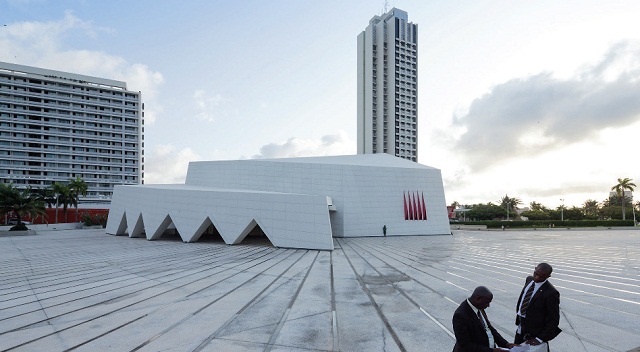
Exhibit rediscovers modernistic architecture in five African cities
Kampala, Uganda | DOMINIC MUWANGUZI | The conversation on the preservation of old building in Kampala has been recently renewed in an itinerary photography exhibition titled `Africa Modernism’ showing at the MakerereArt gallery in Kampala, the capital of Uganda.
The exhibition documents over 80 buildings in five cities on the African continent namely Kumasi (Ghana), Nairobi (Kenya), Abidjan (Côte d’Ivoire), Lusaka (Zambia), and Dakar (Senegal) built mainly during the post – colonial period. However, an additional chapter documenting Kampala architecture inspired during that period is included – to create a local narrative for the audience.
The modern architecture showcased here captures the vibrancy of the African economies at the time and their optimism about the future. It should be noted that this period (1950s-1970s) was not only a time of economic boom for African countries, but a moment to flaunt their new national identity as independent states to the outside world.
In light of this grand opportunity, magnificent buildings like Kenyatta Conference Centre (Nairobi), Coffee Marketing Board Complex (Kampala), the Stadium at Kwame Nkrumah University of Science and Technology (Kumasi) sprung up to mirror the forward looking spirit of the continent and the heroism that accompanied it.
Incidentally, most structures were designed by colonial firms. In Kampala, it was the British firm Peatfield&Bodgener that designed most of the monumental building gracing the city landscape. This was an ironical aspect that somehow reflected the dilemma of the new independent states. Naturally, the design and construction of these colossal buildings would have been undertaken by the locals, perhaps only supervised by the west.
Yet this predicament does not compromise on the aesthetics of this modern architecture nor its functionality to the public. Buildings like Uganda House add character to the urban landscape making it attractive and unique. The buildings are also a splendid sight with towering apartments and designs that are symbolic of cultures and traditions of a specific locale. For example the Uganda National Theatre building was shaped like a bow to reflect the socio-cultural, religious, political and economic significance of Uganda as a country. Similar significance is mirrored in the architecture of national conference centres, banks, and legislative buildings.
Also, the fact that most of the information on these old buildings, in the Uganda context, is stored in the British Archives in the UK poses a serious problem in terms of research on them. Who was commissioning these buildings? Who were the architects? Who governed their design choice? Without quick and easy answers, current governments are ill- equipped to make further possible developments on these structures. This has inspired the trend of demolishing them to pave way for “better constructions” around the city.
Such hasty developments; with no reference to already existing architecture, risks to erode the political –social context that influenced such constructions. In fact, many building constructed today, lackcultural- social significance to the locale.
So this exhibit plays a crucial role in rediscovering some of the best architecture on the African continent that needs to be preserved against the urgency to court new trends in constructions that come with globalisation. It recognises that pressure to be part of a wider African identity. Without preserving them, certain histories and heritage of many African societies will be lost.
The show is curated by German architect and author Manuel Herz. The exhibition in Kampala is supported by the Goethe Zentrum Kampala/ UGCS and will remain open to the public until 18 January 2019 at the Makerere Art Gallery. Images are courtesy of Goethe Zentrum Kampala.
 The Independent Uganda: You get the Truth we Pay the Price
The Independent Uganda: You get the Truth we Pay the Price


